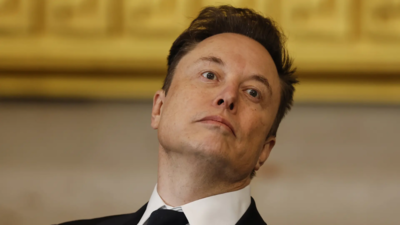By T N Ashok
WASHINGTON DC: Tech billionaire may have left DOGE, but his work was never discontinued. It got a shot in the arm as the US Supreme Court ruled that President Trump could resume mass federal layoffs for now.
Musk parted company with Trump and launched a 3rd party in the US called the America Party to represent the aspirations of the people ostensibly , but the real purpose was to torpedo Trump’s plans in the future not to affect spending cuts and curtail ballooning budget deficit ($3.4 trillion) and debt ($5 trillion) over the next decade.
Musk felt that the DOGE’s aim of curtailing government expenditure by weeding out irrelevant jobs and firing employees in such departments became redundant with Trump’s mega cuts in taxes for the super-rich and outlining no means to plug the gap by not detailing measures to raise revenues to offset it.
Musk sought to save $1 trillion but ended up saving only $170 billion in government expenditure by firing tens of thousands of government employees from federal placements. Some of them in groups moved the courts. In the best case scenario, it represented 8.5% of his original $2 trillion savings.
The Supreme Court on Tuesday lifted a lower court order that had blocked President Trump’s executive order requiring government agencies to lay off hundreds of thousands of federal employees.
The order was unsigned. Justice Ketanji Brown Jackson, who was appointed to the court by President Biden, dissented. Justice Sonia Sotomayor, a fellow liberal, appointee of Barack Obama, concurred with the court’s decision. The order did not make clear how the other justices voted, but they did say, “we express no view on the legality of any” plans to shrink the federal workforce, and it left open the possibility that the issue could return to the Supreme Court.
Justice Sotomayor, in her concurrence, wrote that the lower courts were free to address the constitutionality of the plans. “The plans themselves are not before this Court, at this stage, and we thus have no occasion to consider whether they can and will be carried out consistent with the constraints of law,” she wrote.
In her dissent, Justice Jackson suggested the court was allowing the administration to remake the federal judiciary before the courts had had a chance to determine their legality. “For some reason, this Court sees fit to step in now and release the President’s wrecking ball at the outset of this litigation,” she wrote. “In my view, this decision is not only truly unfortunate but also hubristic and senseless.”
In February, Trump detailed an extensive plan instructing agency heads to prepare for “large-scale reductions in force,” known as RIFs.
Later that month, the administration issued an accompanying memorandum alleging that the federal government is “costly, inefficient and deeply in debt,” and blaming that inefficiency on “unproductive and unnecessary programs that benefit radical interest groups.” The memo required agency heads to submit initial layoff plans to the Office of Management and Budget and the U.S. Office of Personnel Management two weeks later.
The executive order included explicit tools for staff reduction including a general standard that no more than one employee should be hired for every four employees that depart, removing underperforming employees, and allowing term or temporary positions to expire without renewal.
Groups challenging the layoffs in court contend that the RIFs could result in “hundreds of thousands of federal employees losing their jobs.” They argued that without the temporary restraint “there would be no way to unscramble the egg” if they eventually won the larger case in the lower court.
They further contended that without the temporary block to the federal layoffs, “critical government services would be lost … there [would] be no way to go back in time to restore those agencies, functions, and services.”
Labour unions, advocacy groups and local governments sued the president and 21 federal agencies over the RIFs, contending that the president exceeded his authority in mandating the federal layoffs. They argued that the president avoided the congressional approval needed to restructure federal agencies.
During his first term, Trump sought congressional approval to mandate similar layoffs. But Congress rejected his plan. This time Trump didn’t bother going to Congress, and objectors sued, arguing that to implement the RIF plan legally, the administration should have sought congressional approval or “cooperated with Congress through the regular legislative or budgetary process.” (IPA Service)




 Bharat Bandh Called By Central Trade Unions Got Massive Response From People In Bihar
Bharat Bandh Called By Central Trade Unions Got Massive Response From People In Bihar 